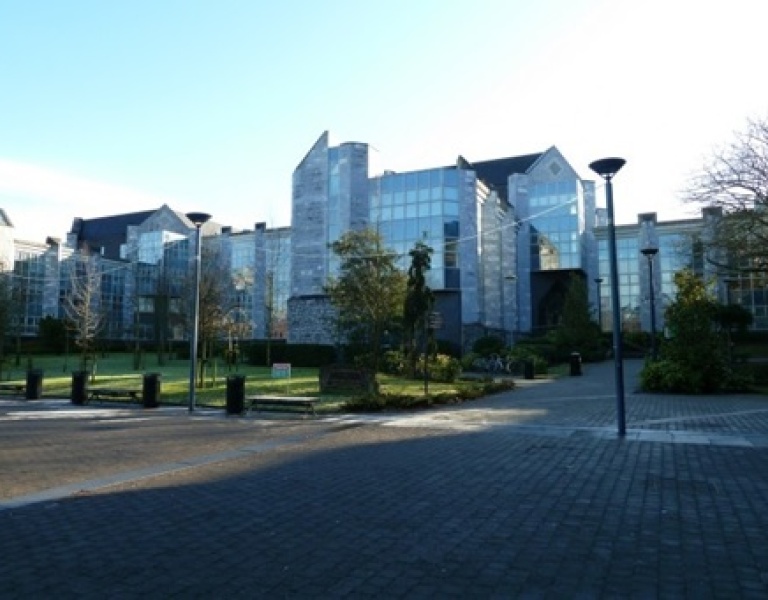Pathfinder - UCC O'Rahilly Building
The objective of the project is to demonstrate that heat pumps can be retrofitted into existing buildings to generate a significant proportion of the buildings heating load.
Objective
The 2023 Climate Action Plan reaffirmed several targets for public bodies that had been originally introduced in previous iterations of the plan. These include a requirement that all public bodies must reduce their GHG emissions from burning fossil fuels by 51% by 2030, compared to a 2016-18 baseline. They must also reduce their electricity emissions in line with anticipated supply-side reductions. SEAI's pathfinder programme has been working collaboratively with public sector organisations to develop scalable solutions to meet these targets, for benefit across the public sector and the wider non-domestic sector.
Like most buildings of its type and age, the UCC O'Rahilly Building was designed for a traditional heating arrangement based on fossil fuel boilers. It does not currently have the desired air tightness, insulation levels, emitter sizes and electrical infrastructure to allow a wholesale switch to a heat pump-based system.
Background
Situated on the Main Campus at UCC, the O'Rahilly Building is laid out in a cruciform shape, with a North-South-East-West orientation. It houses offices, classrooms, computer labs and a café. The use and occupancy of the building has been relatively constant since the building opened in 1997. During term time the building is heavily occupied during the day by staff and students, while at evenings and weekends it is used to host the night and weekend classes that take place on campus. While the occupancy level and opening hours of the building reduce out of term, the building is still used to accommodate summer schools and conferencing.
The building was developed in two distinct phases and the building layout comprises two main blocks. Each block is serviced by a separate plantroom with its own heating system, wet services and electrical distribution. A solar photovoltaic (PV) array is located on the roof of the building and supplies approximately 2% of the building's consumption. Since 2009, the annualised imported energy consumption in the building has reduced by 25%, with savings attributed to improved housekeeping, reduced operating times on facility equipment, building management system (BMS) controls upgrade and installation of the PV array. Most of the building is naturally ventilated.
Project Description
Under this Pathfinder project, the two separate heating systems which separately supplied Block A and Block B were hydraulically connected, to allow replacement with a single heating plant. A new low loss header was installed, with new BACnet1 compatible, variable flow distribution pumps and associated 2 port valves.
The existing gas fired boilers (3,780 kW total installed capacity with an estimated efficiency of 70-75%) which provided space heating were replaced with a new heating plant arrangement, consisting of a 400 kW air source heat pump sized to be capable of meeting a target of 50% of the total building heat load, in conjunction with two 475 kW rated gas fired condensing gas boilers. The system was designed to accommodate the addition of a second heat pump in the future. Domestic hot water demand continues to be provided by a standalone boiler, supplemented with solar thermal.
In addition, several targeted repair measures were implemented to reduce heat loss from the building. Existing pneumatic air vents in the atria were replaced with electro-controlled units. Window seals were repaired or replaced on several glazed panels. Door seals were repaired or replaced on a number of external doors.
The old heating system was controlled and monitored via a Cylon based BACnet building management system (BMS) system, installed in 2018 under an SEAI Better Energy Community grant fund. Modifications to the existing BMS controls were carried out under the project to incorporate the heat pump and new pump arrangements. Both heat and electrical metering was fitted to the new heat generation plant to allow projected savings associated with the project to be validated and to enable on-going monitoring of the heating system.
The project was procured using UCC's existing multi-supplier frameworks, which reduced the overall procurement timeframe.
Performance
Post-occupancy performance monitoring is ongoing. UCC has used a third- party application (Opnbuildings.com) to measure and share key data such as carbon savings. The platform has helped UCC to tune and optimise the heat pump, as well as monitor the overall heating system and building performance.
For 2023:
- The ASHP supplied 49% of the heating load (target 50%).
- The Seasonal Coefficient of Performance for the ASHP was 2.7 (target of 2.9)
- 34 tonnes CO2 was avoided through the operation of the ASHP/ new boilers.
Plans for 2024 include the modification of heating strategies to maximise heat pump operation over boiler to maximise carbon savings.
Insights
Weekly monitoring of performance has proved to be extemely important in capturing any system slippage and ensuring that appropriate action is taken quickly to rectify any deterioration in performance. This ensures that the expected energy and emission savings will be maintained over the lifetime of the system.
The original boiler systems were operated at a low temperature (55 degrees celsius) for two heating seasons prior to the retrofit works. This provided a method of assessing the building's suitability for a heat pump retrofit without significant building fabric or radiator upgrade, and significantly reduced the risk that the heat pump might not be able to meet the building heat load as planned.
Learn more about the Pathfinder Programme